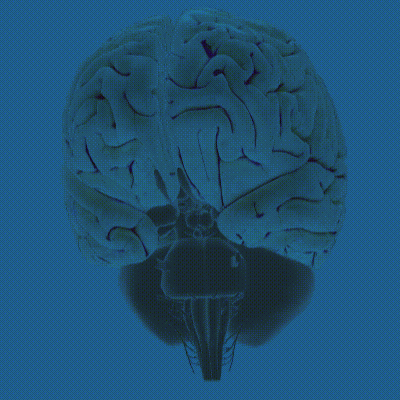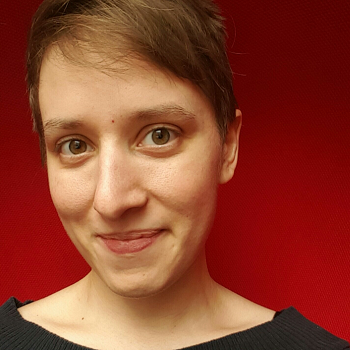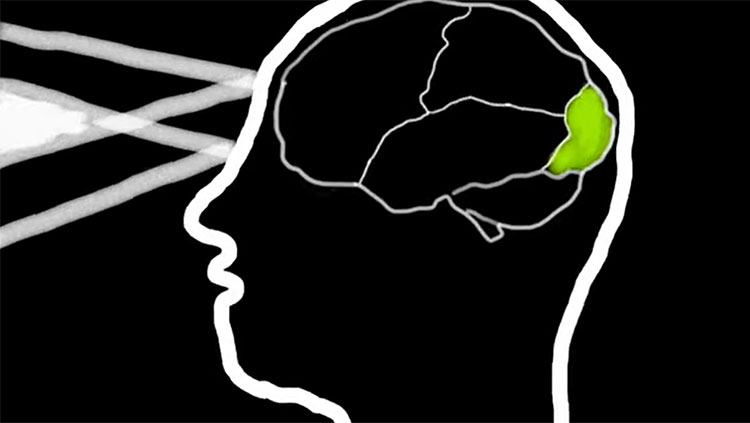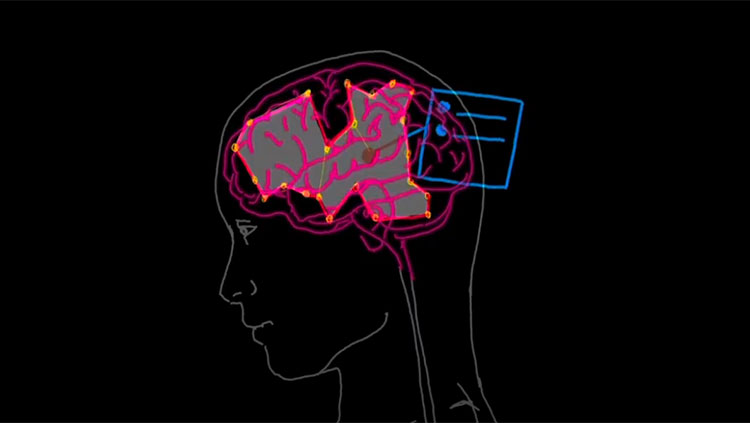Executive Function and Efficient Information Processing
- Reviewed1 May 2023
- Author Marissa Fessenden
- Source BrainFacts/SfN

Some of the most complex processes in the brain occur in the prefrontal cortex (PFC), the outer, folded layers of the brain located just behind your forehead. Like the chief executive officer of a company, the PFC supervises everything the brain does, taking in sensory and emotional data and using this information to plan and execute decisions and actions.
The PFC is one of the last regions of the brain to develop, not reaching full maturity until adulthood. This is one reason why children’s brains function quite differently from those of adults. The processing that takes place in this area is known as executive function.
Specific areas of the PFC support executive functions such as selecting, rehearsing, and monitoring information being retrieved from long-term memory. To serve these functions, the PFC also interacts with a large network of posterior cortical areas that encode specific types of information — for example, visual images, sounds, words, and spatial location.
Although more fully evolved in humans, some aspects of executive function are displayed by other animals. Studies in nonhuman primates have shown that neurons in the PFC keep information active or “in mind” while the animal is carrying out a task that depends on it. This is analogous to working memory in humans, which is a form of executive function.
Executive function can be considered a blend of three core skills: inhibition, working memory, and shifting. Inhibition is the ability to suppress a behavior or action when it is inappropriate — such as calling out loudly when one is in an audience or classroom. Even toddlers demonstrate hints of a developing inhibition ability, as shown in their ability to delay (for at least a short period of time) eating a treat placed in front of them. By the time children reach preschool, they can tackle more complex inhibition tasks, such as “Lucia’s hand game,” in which they are told to make a fist when shown a finger and a finger when shown a fist. This test, which requires inhibiting their more automatic imitation of adults, is very hard for 3-year-olds, but 4-year-olds perform significantly better. As people grow older, they are able to wield this ability more skillfully.
In addition to inhibition, this hand game and similar tasks rely on working memory, which is the ability to hold a rule in mind while you decide how to act (in this case, opposite the demonstrator). When you have new experiences, information initially enters your working memory, a transient form of declarative or conscious memory. Working memory depends on both the PFC and the parietal lobe. It gives you the ability to maintain and manipulate information over a brief period of time without external aids or cues — such as remembering a phone number without writing it down. Most people can memorize and recite a string of numbers or words over a brief period of time, but if they are distracted or there is a time lag, they are more likely to forget. This shows the duration of working memory, which requires active rehearsal and conscious focus to maintain.
The third key component of executive function is shifting, or mental flexibility, which allows you to adjust your ongoing behavior when conditions require it. For example, in the card sorting task, people must figure out (from the examiner’s simple “yes/ no” responses) that they must switch from sorting by one rule, such as suit, and begin sorting by another, such as number. People with damage to their PFC have great difficulty doing this and tend to stick with the first sorting rule. Children’s ability to shift successfully between tasks follows a developmental course through adolescence. It appears that preschool-aged children can handle shifts between simple task sets in a card-sorting task and later handle unexpected shifts between increasingly complex task sets. Both behavioral and physiological measures indicate that the ability to monitor one’s errors is evident during adolescence; by mid-adolescence, more complex task-switching reaches adult-like levels. Because of its greater need for multiple cognitive processes, mature shifting likely involves a network of activity in many regions of the PFC.
Many of the changes in executive functioning ability are gradual, although the changes are more apparent in young children. The PFC is the main region implicated in executive functioning; however, the skills that fall under this umbrella use inputs from all over the brain. Interestingly, the activity level associated with executive function actually decreases as children and adolescents mature, reflecting the fact that these circuits become more fine-tuned and efficient as the neuron networks mature.
Adapted from the 8th edition of Brain Facts by Marissa Fessenden.
CONTENT PROVIDED BY
BrainFacts/SfN
References
Barense M. D., Warren. J. D., Bussey, T. J., Saksida, L. M. (2016) Oxford Textbook of Cognitive Neurology & Dementia, Chapter 4: The temporal lobes. https://academic.oup.com/book/24555/chapter-abstract/187755187?redirectedFrom=fulltext
Best, J. R., & Miller, P. H. (2010). A developmental perspective on executive function. Child development, 81(6), 1641–1660. https://doi.org/10.1111/j.1467-8624.2010.01499.x
Binder, J. R., Desai, R. H., Graves, W. W., & Conant, L. L. (2009). Where is the semantic system? A critical review and meta-analysis of 120 functional neuroimaging studies. Cerebral cortex (New York, N.Y.: 1991), 19(12), 2767–2796. https://doi.org/10.1093/cercor/bhp055
Florence Bouhali, F., Thiebaut de Schotten, M., Pinel, P., Poupon, C., Mangin, J. F., Dehaen, S., & Cohen, L. (2014). Anatomical Connections of the Visual Word Form Area. Journal of Neuroscience, 34(46) 15402-15414. https://doi.org/10.1523/JNEUROSCI.4918-13.2014
Buchsbaum, B. R., Hickok, G., Humphries, C. (2001). Role of left posterior superior temporal gyrus in phonological processing for speech perception and production. Cognitive Sci, 25, 663-678. http://www.sciencedirect.com/science/article/pii/S0364021301000489
Campbell, M. E., & Cunnington, R. (2017). More than an imitation game: Top-down modulation of the human mirror system. Neuroscience and Biobehavioral Reviews, 75, 195–202. https://doi.org/10.1016/j.neubiorev.2017.01.035
Centelles, L., Assaiante, C., Nazarian, B., Anton, J. L., & Schmitz, C. (2011). Recruitment of both the mirror and the mentalizing networks when observing social interactions depicted by point-lights: a neuroimaging study. PloS One, 6(1), e15749. https://doi.org/10.1371/journal.pone.0015749
Charpentier, C. J., De Neve, J. E., Li, X., Roiser, J. P., & Sharot, T. (2016). Models of Affective Decision Making: How Do Feelings Predict Choice? Psychological Science, 27(6), 763–775. https://doi.org/10.1177/0956797616634654
Dixon, M. L., & Christoff, K. (2014). The lateral prefrontal cortex and complex value-based learning and decision making. Neuroscience and Biobehavioral Reviews, 45, 9–18. https://doi.org/10.1016/j.neubiorev.2014.04.011
Domanski C. W. (2013). Mysterious "Monsieur Leborgne": The mystery of the famous patient in the history of neuropsychology is explained. Journal of the History of the Neurosciences, 22(1), 47–52. https://doi.org/10.1080/0964704X.2012.667528
Domenech, P. & Koechlin, E. (2014). Executive control and decision-making in the prefrontal cortex. Curr Opin Behav Sci, 1, 101-106.
http://www.sciencedirect.com/science/article/pii/S2352154614000278
Doré, B. P., Zerubavel, N., Ochsner, K. N. (2015). Social cognitive neuroscience: A review of core systems. In Mikulincer, M., Shaver, P. R., Borgida, E., & Bargh, J. A. (Eds.), APA Handbook of Personality and Social Psychology, Vol. 1. Attitudes and social cognition (pp. 693–720). American Psychological Association. https://doi.org/10.1037/14341-022
Frederick R. (2014). Testing for executive function in gibbons. Proceedings of the National Academy of Sciences of the United States of America, 111(13), 4738. https://doi.org/10.1073/pnas.1401589111
Hickok G. (2009). The functional neuroanatomy of language. Physics of Life Reviews, 6(3), 121–143. https://doi.org/10.1016/j.plrev.2009.06.001
Huth, A. G., de Heer, W. A., Griffiths, T. L., Theunissen, F. E., & Gallant, J. L. (2016). Natural speech reveals the semantic maps that tile human cerebral cortex. Nature, 532(7600), 453–458. https://doi.org/10.1038/nature17637
Konopka, G., & Roberts, T. F. (2016). Insights into the Neural and Genetic Basis of Vocal Communication. Cell, 164(6), 1269–1276. https://doi.org/10.1016/j.cell.2016.02.039
Mzuguchi N., Nakata, H., Kanosue, K. (2016) The right temporoparietal junction encodes efforts of others during action observation. Sci Reports, 6, 30274. https://www.nature.com/articles/srep30274
Peelle J. E. (2012). The hemispheric lateralization of speech processing depends on what "speech" is: a hierarchical perspective. Frontiers in Human Neuroscience, 6, 309. https://doi.org/10.3389/fnhum.2012.00309
Price C. J. (2012). A review and synthesis of the first 20 years of PET and fMRI studies of heard speech, spoken language and reading. NeuroImage, 62(2), 816–847. https://doi.org/10.1016/j.neuroimage.2012.04.062
Soutschek, A., Sauter, M., & Schubert, T. (2015). The Importance of the Lateral Prefrontal Cortex for Strategic Decision Making in the Prisoner's Dilemma. Cognitive, Affective & Behavioral Neuroscience, 15(4), 854–860. https://doi.org/10.3758/s13415-015-0372-5
Spunt, R. P., Satpute, A. B., & Lieberman, M. D. (2011). Identifying the what, why, and how of an observed action: an fMRI study of mentalizing and mechanizing during action observation. Journal of Cognitive Neuroscience, 23(1), 63–74. https://doi.org/10.1162/jocn.2010.21446
What to Read Next
Also In Thinking & Awareness
Trending
Popular articles on BrainFacts.org










.jpg)









